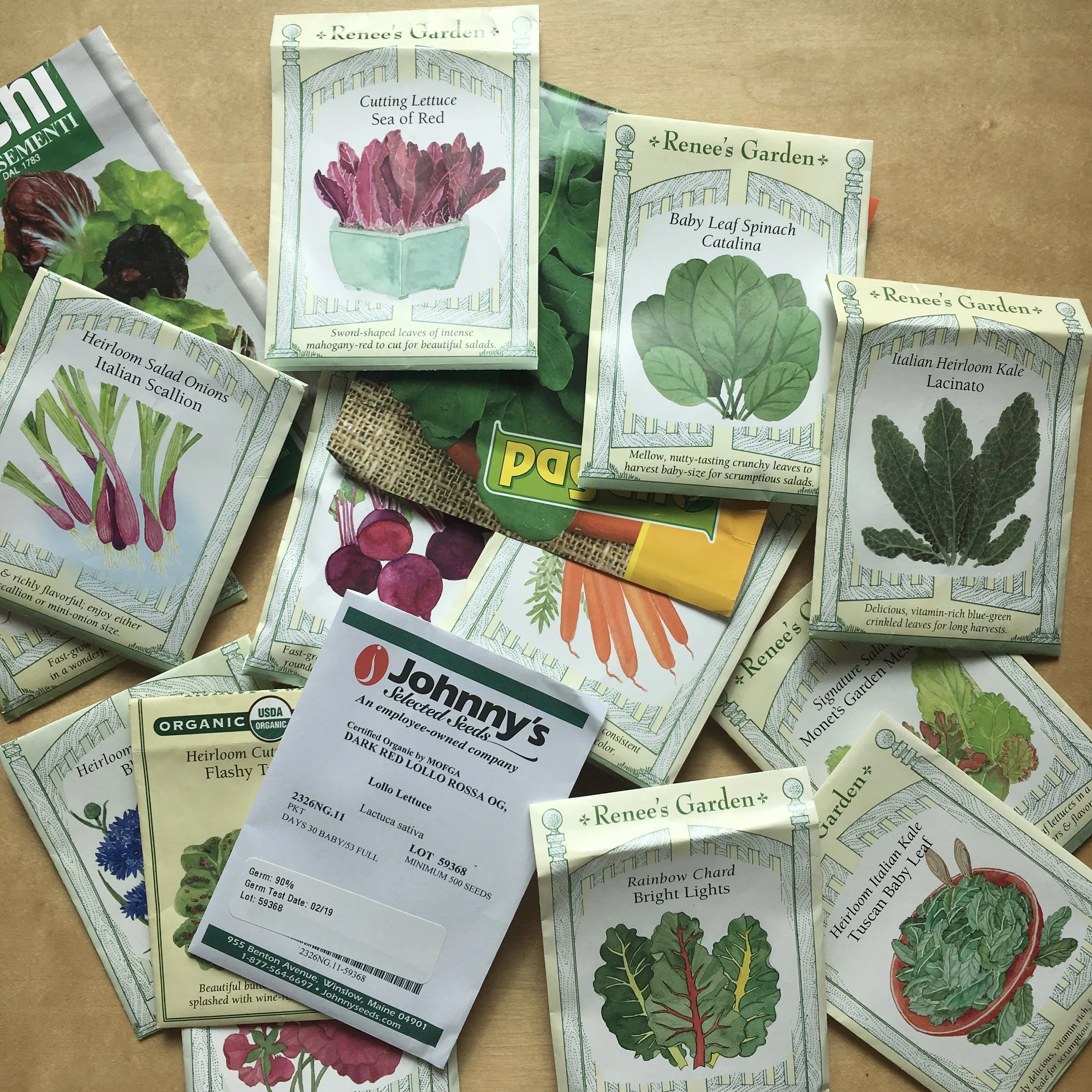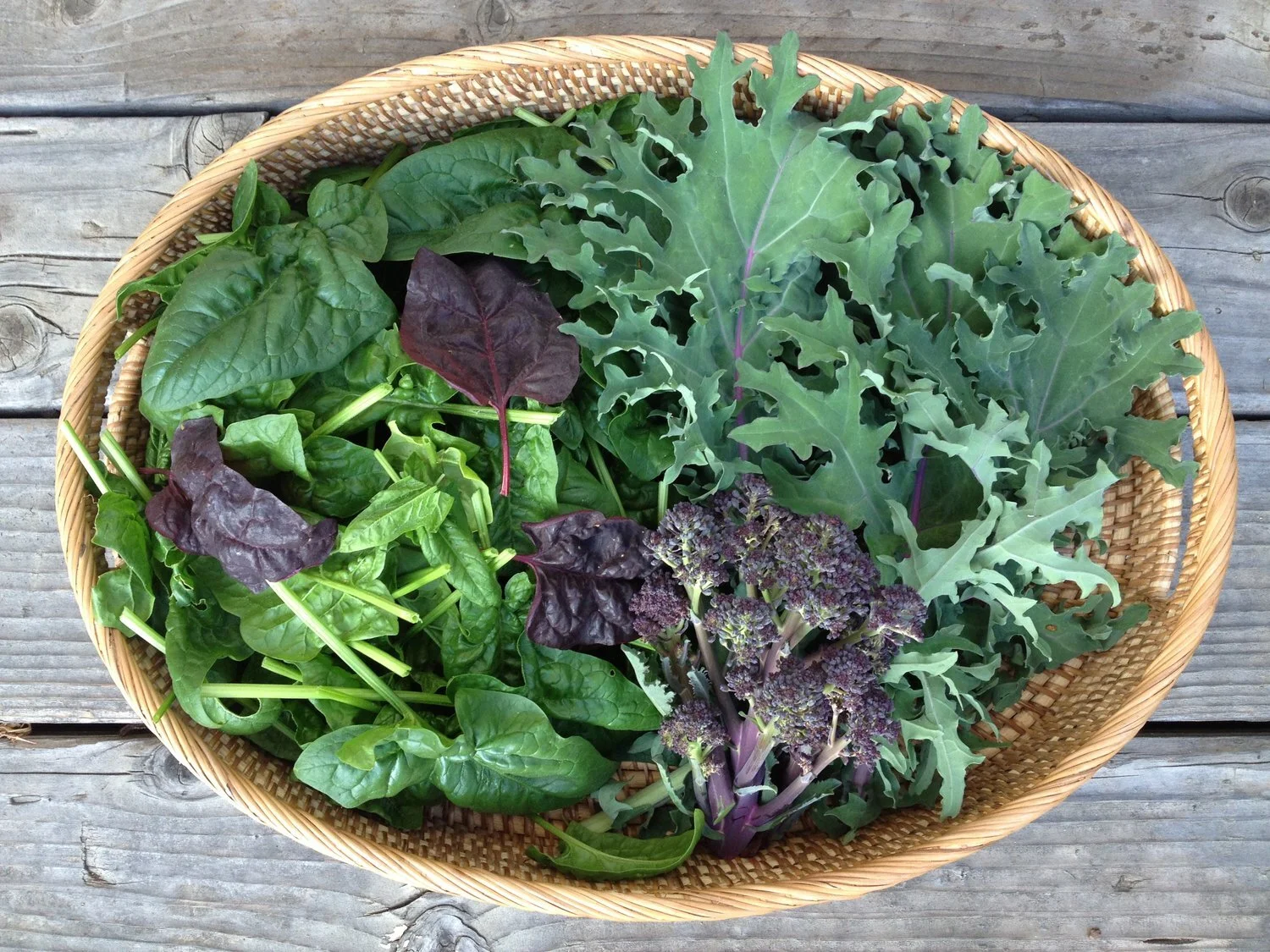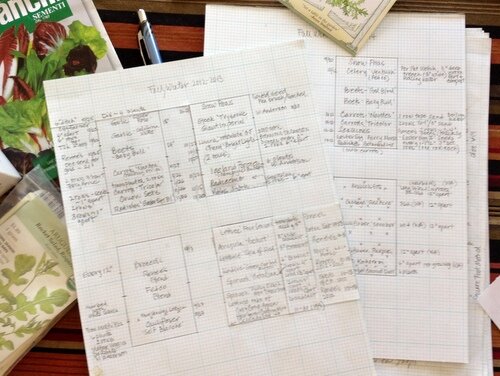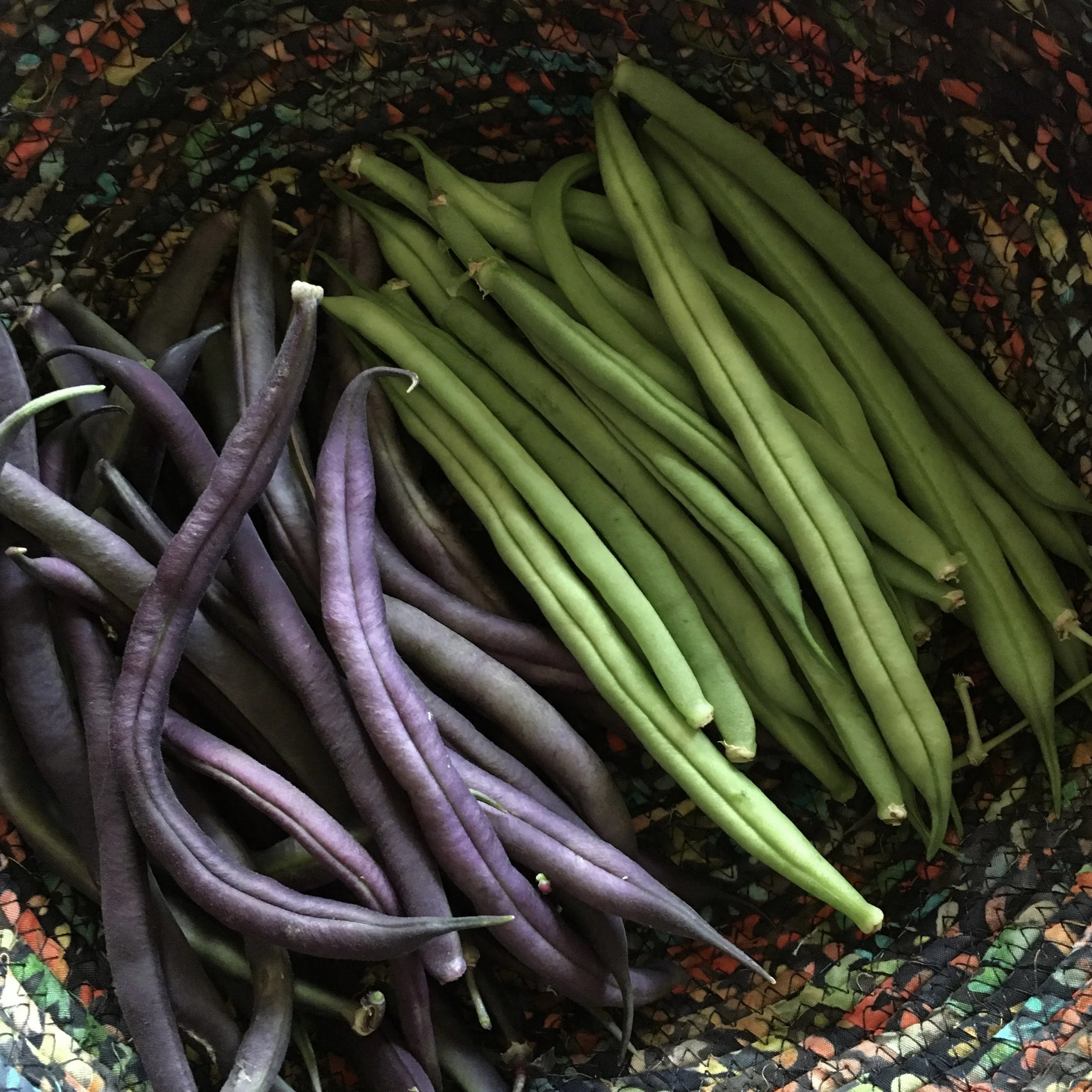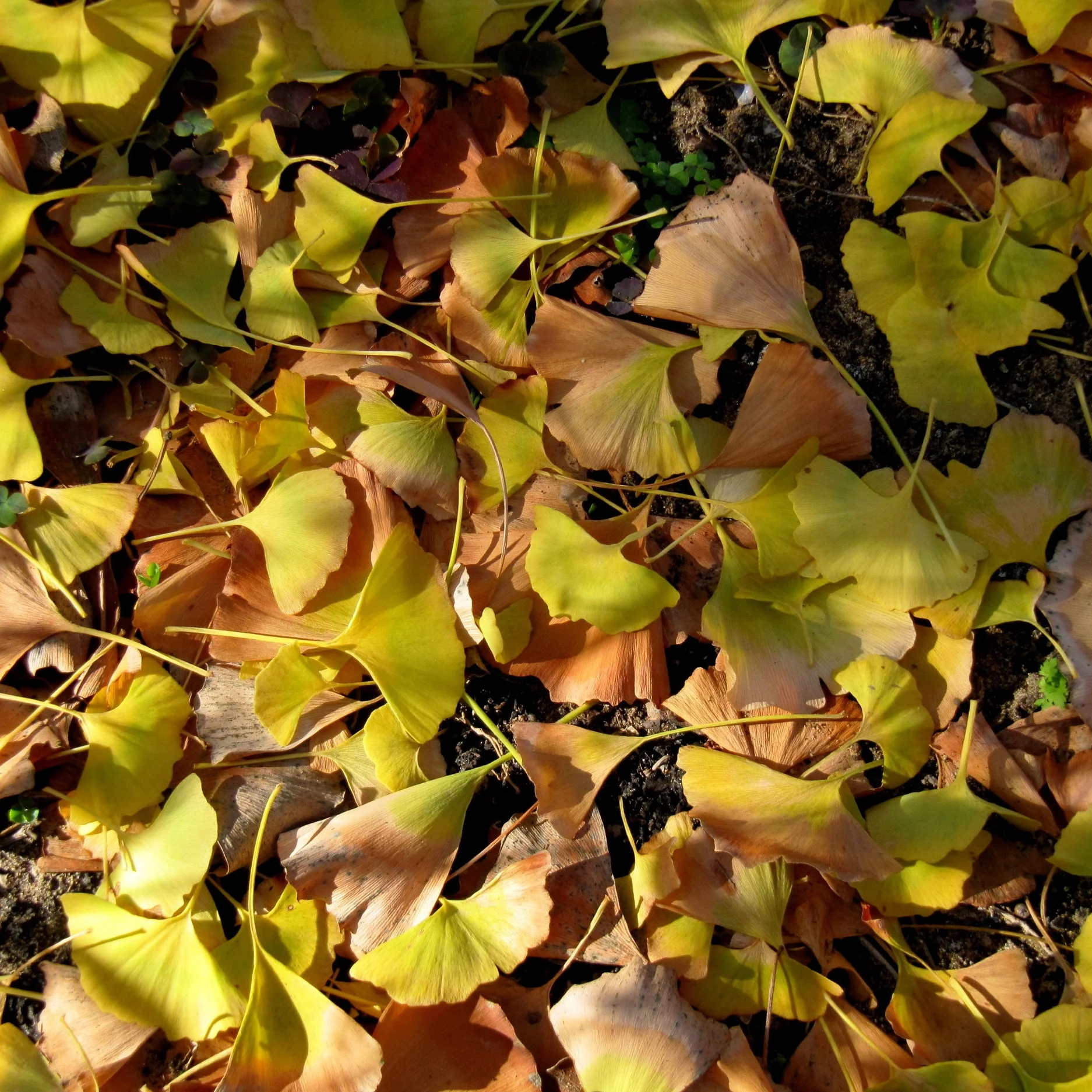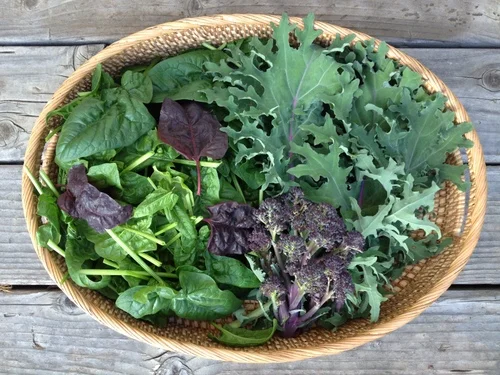Gardening for a Second Season
My early vegetable gardening years were in Massachusetts where the season spanned the months of March through October, more or less depending on the weather. Moving back to California I reveled in the opportunity to grow vegetables 52 weeks a year (hence the name of my blog and Instagram account). I learned the seasonality of the vegetable garden from Master Gardeners of San Diego County, California Garden Magazine and seed purveyors such as Renee’s Garden.
If the fall-winter garden, the Second Season Garden is a new concept for you read the reprinted piece from the website of Renee’s Garden, written by Renee Shepherd.
Mid to late summer is an ideal time to plant seeds for a second gardening season that can be as productive as your major early spring plantings.
For a delicious and very nutritious cornucopia of fall meals, late summer is the time to plant juicy Lettuces, the cool-season aromatic herbs – Dill, Garlic Chives, Chervil, Cilantro, Arugula, and Parsley; hearty greens like Chard or Kale; Baby Pak Choi, and other Oriental greens; Carrots, Beets, Leeks, Peas, Green Onion, Spinach, Radishes, Fennel and all the brassica family members such as Broccoli, Broccoli Raab, Brussels Sprouts, Cabbage, Collards, Tatsoi, etc.
Late planted crops have less competition from weeds and pests and grow beautifully with less garden work. In mild-winter areas of the country, you'll have great harvests in time for Thanksgiving and many crops will hold perfectly through the low light winter months without bolting to seed or becoming bitter tasting as they would in the heat of early summer.
It may seem odd to be starting new seeds when a lot of your summer produce like squash and tomatoes are still cranking, but it's well worth the effort. For reliable harvests in cooler weather, seedlings must have good initial growth and well-established root systems. The goal is to have fully grown, ready to pick plants that basically store themselves in the garden throughout the fall, so you can pick them as you need them over a long sustained harvest season.
Start seeds in containers or in a garden area with dappled sun or light shade – wherever seeds can germinate comfortably out of the hot sun but still get plenty of light after seedlings are well-established. Plant in well-prepared moist soil and in the evening so they will have the advantage of cooler night temperatures to settle in and minimize shock. If daytime temperatures are still in the high 80s, shelter your newly transplanted seedlings with row covers or a shade cloths for a few days so they can adjust heat and sun.Once the seedlings have acclimated, don't forget to supply adequate moisture to these young crops and fertilize them regularly in the early growing stages. In USDA zones 8, 9, and 10, some fall-planted crops may overwinter as small plants and wait for spring temperatures to rise and daytime hours to get longer before heading or leafing up.
A Second Season Garden harvest basket.
Garden records for my Second Season Garden.
